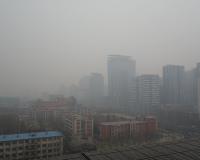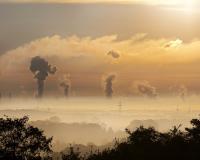
Vibrant Environment
All | Biodiversity | Climate Change and Sustainability | Environmental Justice | Governance and Rule of Law | Land Use and Natural Resources | Oceans and Coasts | Pollution Control

With the 50th Anniversary of Earth Day still on our minds, air quality is thriving throughout the United States’ most populous areas. It is a goal long fought for by leaders in environmental law and policy, but it has only been achieved with the cost of the devastating COVID-19 pandemic.

It’s amazing how quickly humanity’s concern can shift when circumstances demand it, and the coronavirus pandemic has riveted our attention. Even today, Earth Day, talking about anything else risks seeming detached or indifferent to the enormous suffering, disruption, and dislocation that the COVID-19 virus has unleashed on the world. But I need to alert you to a new ELI report analyzing the other major challenge that will be waiting for us on the other side of our current crisis, one that, like the pandemic, is deeply informed by science.

Nearly four billion people worldwide are under government mandates to socially distance themselves from one another in order to “flatten the curve” of COVID-19. Non-essential workers are hunkering down at home, bringing the daily commute and air travel to a virtual halt. The resulting decline in air pollution is stunning, visible even in satellite images.

In “Animal Agriculture Liability for Climatic Nuisance: A Path Forward for Climate Change Litigation?,” Prof. Daniel E. Walters lays out a new path for climate litigation: environmental litigators should bring federal public nuisance suits to remedy environmental harms caused by animal agriculture.

Drinking water contamination in Flint, Michigan, has garnered nationwide attention, but it is neither isolated, nor a primarily urban problem. As Madeline Kane explains in the April issue of ELR—The Environmental Law Reporter, a hidden water crisis is straining thousands of smaller communities that share Flint’s risk factors—shrinking populations, social marginalization, and deficient funds.

It is now half a century since the first Earth Day. Not only did I help run our school’s “teach in” in 1970, it is also 50 years since my entrance into environmental journalism. A first-person history may help to affirm the importance of the environmental protections that soon followed, as well as of a robust student press to push today’s issues.

Have you ever heard about the Svalbard Global Seed Vault? It might look like something from the future, but this very important structure can be found today roughly 1,300 kilometers (about 800 miles) north of the Arctic Circle, blasted 130 meters (roughly 430 feet) deep into a mountain. Designed to withstand doomsday scenarios, what valuable treasures might such a building hold? The answer is simple but may be surprising: seeds!

Since China strengthened its environmental enforcement efforts in 2014, the quality of the country’s environment has been gradually improving. At the same time, however, many regulated businesses are finding it difficult to comply with the increasingly stringent local environmental standards imposed by local regulators.

Over the past few years, considerable energy has been devoted toward advancing environmental justice (EJ) at the state level. State agencies can be robust laboratories for experimenting with ways to advance EJ, as they’re often tasked with making decisions under state and federal environmental law. As EJ pioneer Charles Lee explains in the March issue of ELR—The Environmental Law Reporter, state lessons can cross-fertilize and inform work at other levels of government, and the role of nongovernmental players is also critical to driving transformative change. Lee believes it is essential that those working to advance EJ systemically expand their discourse.

With its vast land and sea territory spanning 9.6 million square kilometers (3.7 million square miles), China is one of 17 mega-biodiversity countries in the world. It is home to nearly 10% of all plant species and 14% of all animals on earth. Protecting China’s uniquely rich biodiversity is therefore paramount to the country itself and to the entire world.